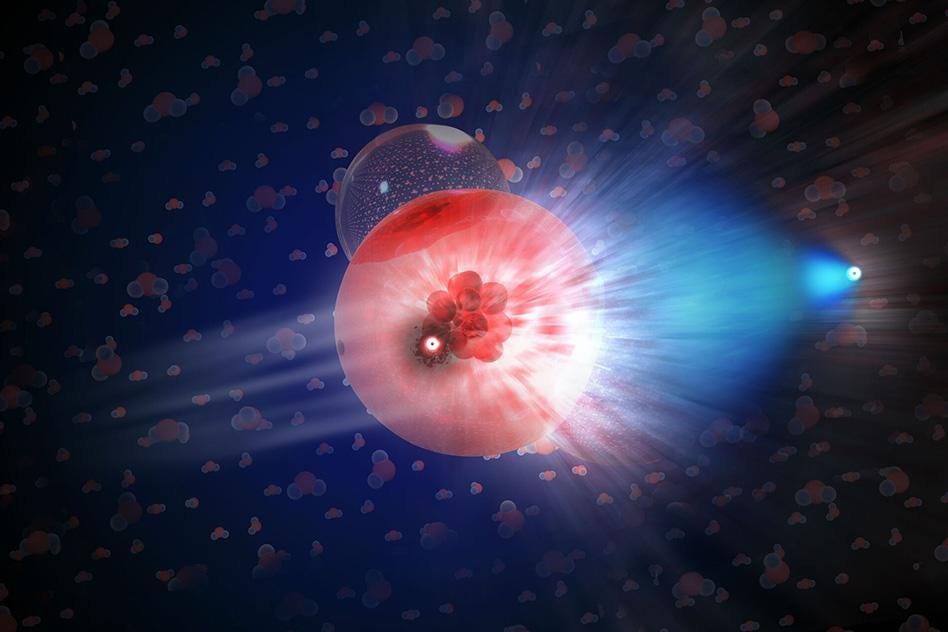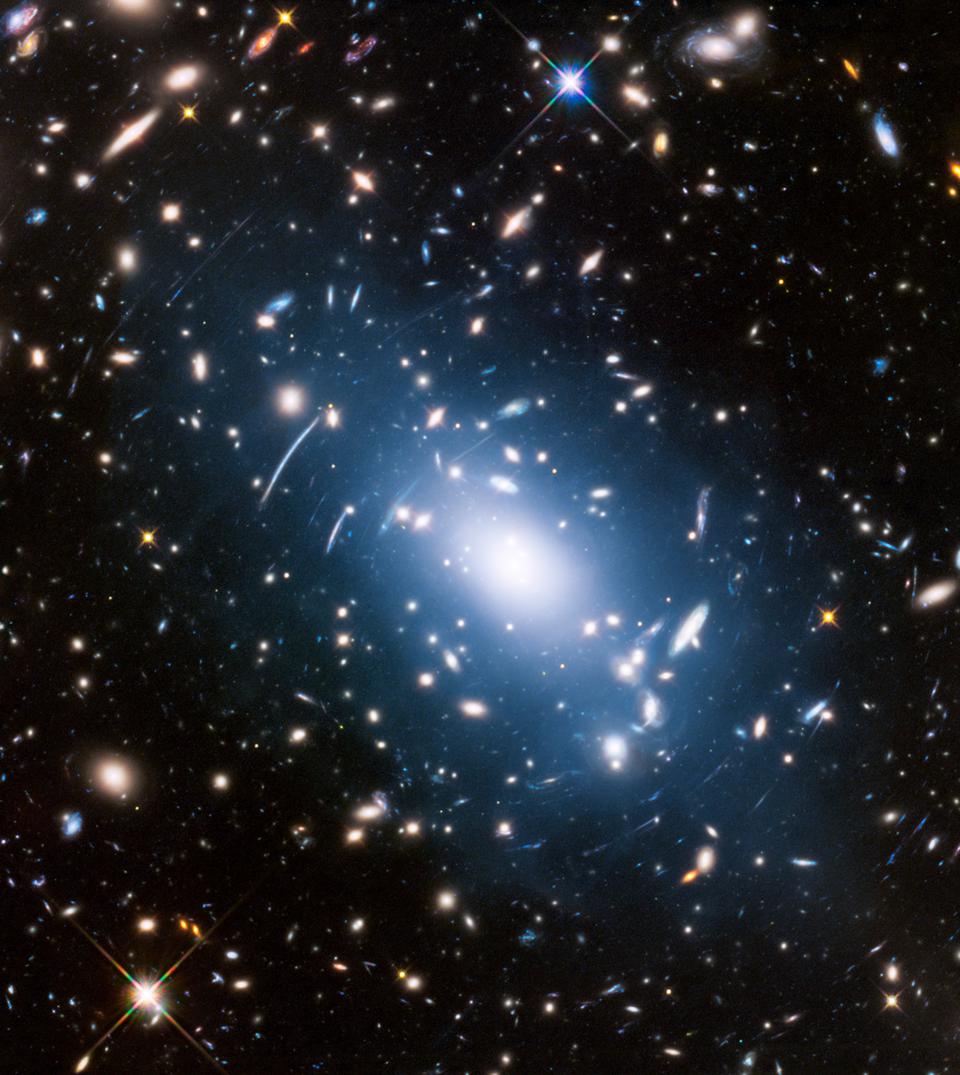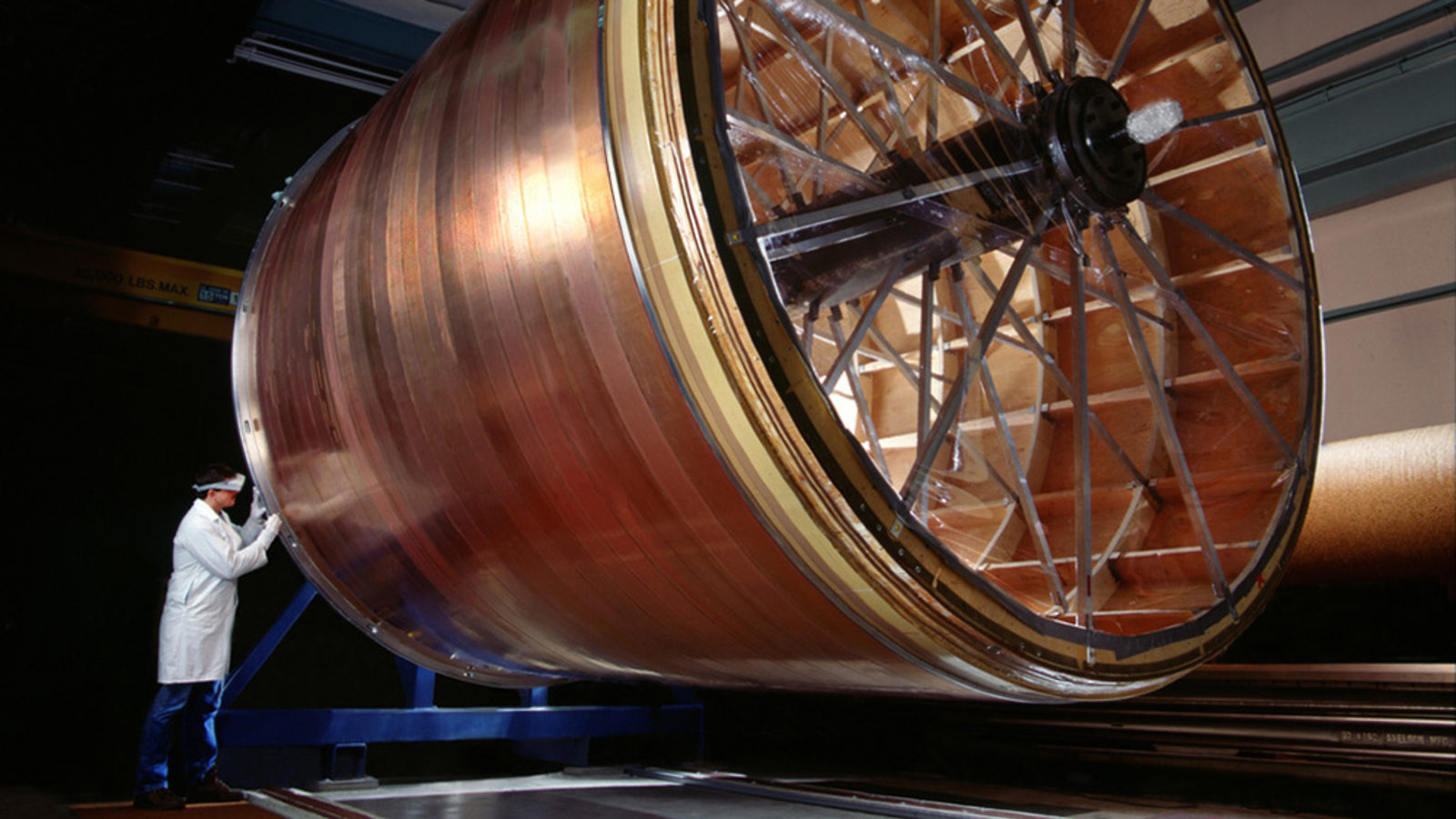XENON experiment puts the squeeze on WIMPy dark matter
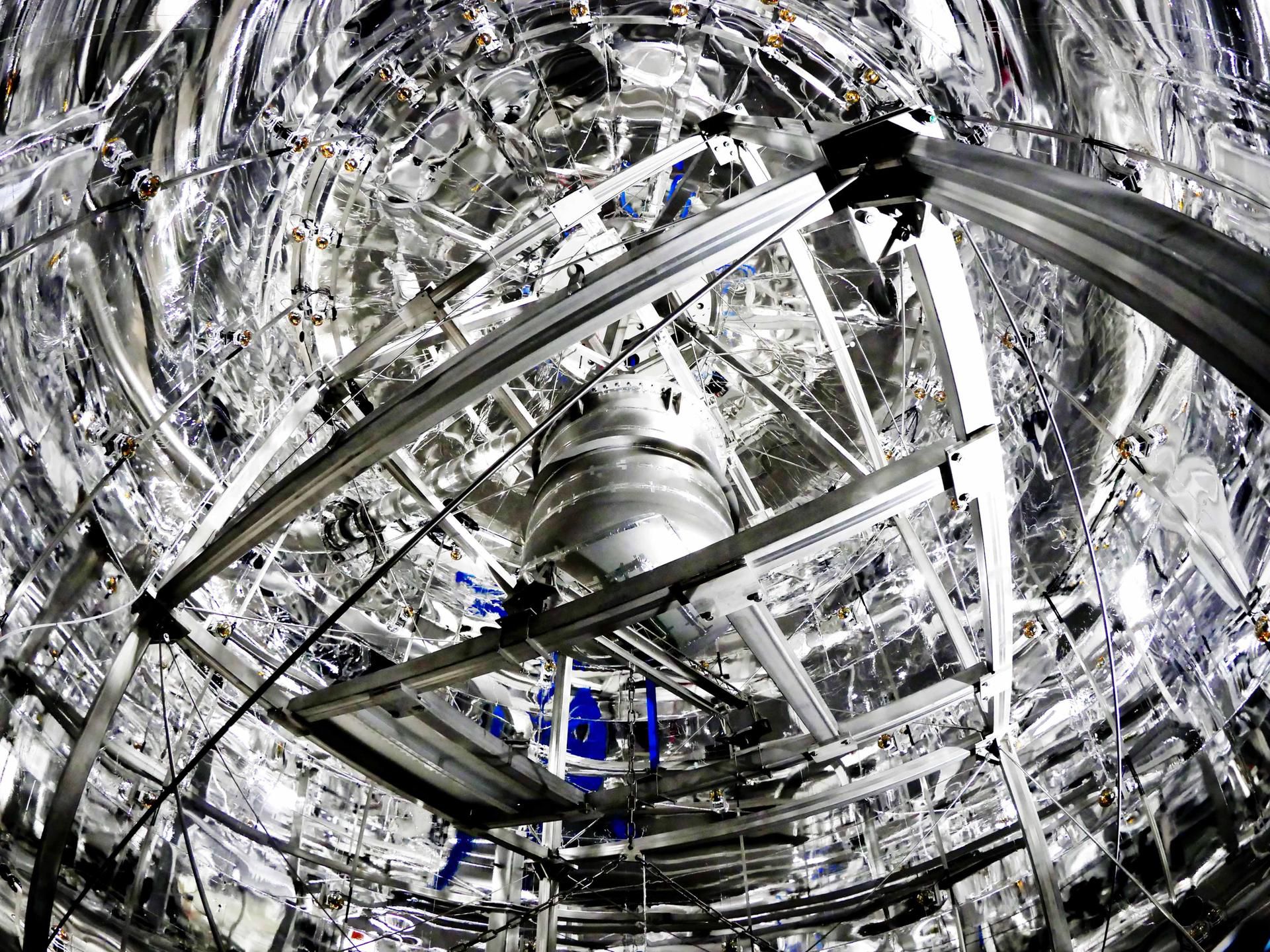
- The astrophysical evidence for dark matter is overwhelming: in galaxies, galaxy clusters, in the CMB, and throughout the cosmic web, but it’s all indirect evidence.
- In order to truly understand dark matter, like what it is and what its properties are, we need to detect it directly, and that requires some incredible experimental ingenuity.
- With its latest set of upgrades, the XENON collaboration just performed the most sensitive “blind analysis” in dark matter detection history, and WIMPs are nowhere to be found.
When it comes to the question of “What makes up the Universe?” the Standard Model simply doesn’t add up. When we add up all of the normal matter — stuff made up of quarks and charged leptons — we find that it’s only responsible for about 1/6th of the total “mass” that must be out there. Additionally, observations of individual galaxies, of groups and clusters of galaxies, of the cosmic microwave background, and of the large-scale structure of the Universe all paint the same picture: a Universe where 5/6ths of the mass out there isn’t made of any Standard Model particle, but rather is invisible, cold, and non-interacting except through the gravitational force.
We call this massive species of matter that must exist, but whose nature remains unknown, dark matter. This dark matter must be cold (i.e., moving slow compared to the speed of light) at even early times, teaching us that if it ever were in thermal equilibrium with the “primordial particle soup” of the hot Big Bang, it must be quite a massive species of particle. These classes of particles — that interact only very weakly but that have large rest masses — are collectively known as WIMPs: Weakly Interacting Massive Particles. In a remarkable experimental achievement, the XENON collaboration just announced, via a public talk from Daniel Wenz, their tightest constraints on WIMP dark matter, enough to rival the currently world-leading LZ collaboration, with even better results expected in the very near future. It’s a remarkable experimental achievement, and one that illustrates just how experimental physics progresses.
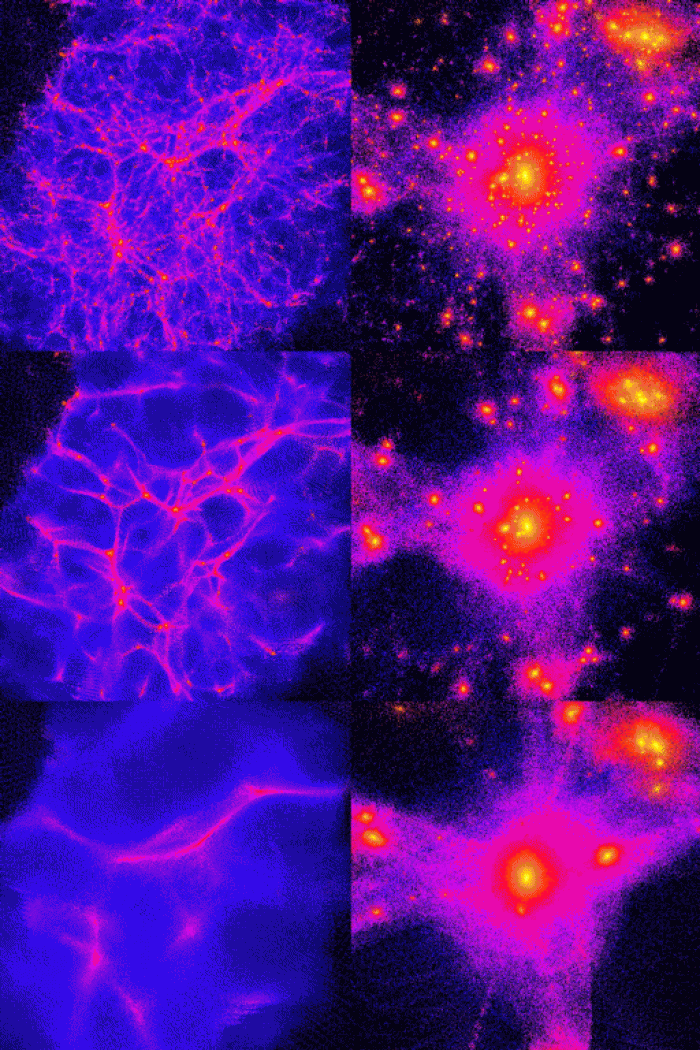
Let’s imagine that the WIMP scenario is correct: that there really is a new species of stable, cold dark matter particle out there, and that it was created in the very early Universe. The way it came into existence would be as follows.
- The hot Big Bang occurred, filling the Universe with a bath of extremely energetic particles (and antiparticles), that collided, interacted, annihilated, and created new particle-antiparticle pairs via Einstein’s E = mc².
- As the Universe expanded and cooled, the more massive, unstable particles (and antiparticles) decayed away, leaving only stable ones as there’s no longer enough energy to make new unstable particle-antiparticle pairs.
- Eventually, particles that only interact weakly (not necessarily through the weak force, but “weak force” or even more weakly) “decouple” from the primordial plasma, meaning that they stop scattering off of or interacting with other particles, including particles of their own species.
- And, if there’s a species of heavy, neutral particle that’s stable and that interacts only very weakly (and, of course, that gravitates, since it has mass), that species should persist even to the present day.
That’s a quite general scenario for making WIMPs, which would then form cold dark matter halos around galaxies, clusters of galaxies, and all large-scale gravitationally bound structures.
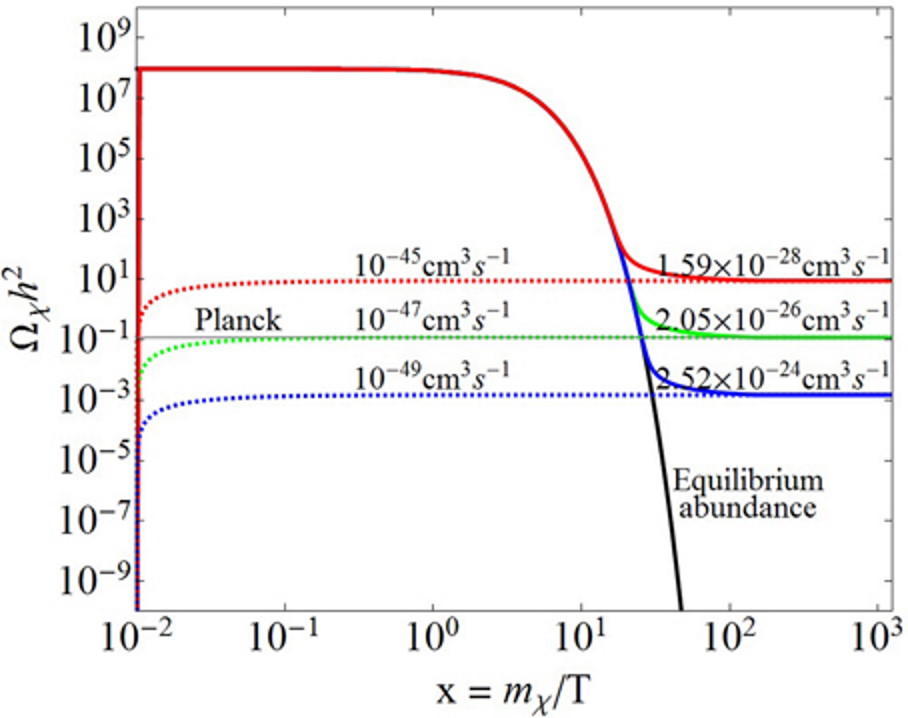
WIMPy dark matter isn’t the only possibility for what dark matter could be, of course, but this scenario — in part because it’s so general and in part because there are so many specific realizations that would lead to the generation of large numbers of WIMPy particles in the early Universe — is definitely worth exploring. If such a species of particle exists, it should also be present in our own galaxy, permeating the galactic halo, and also flying through the Earth all the time as we orbit around the Sun and as our Solar System moves through the Milky Way. And this is where we get our motivation for building detectors, like XENON, LZ, PANDA, and others, to directly interact with these WIMPy particles.
The basic rationale is this: even in today’s cold, low-energy Universe, there ought to be some finite, non-zero probability for a WIMP and a baryon — i.e., a proton or a neutron — to collide with one another. They don’t need to do anything fancy like fuse, merge, crack one another open, or produce a novel “daughter” particle; all they need to do is smack into one another, exchanging energy and momentum in the process. If this type of event occurs, which it should as long as there’s a finite, non-zero cross-section between dark matter and normal matter, it’s possible, in principle, to detect it.
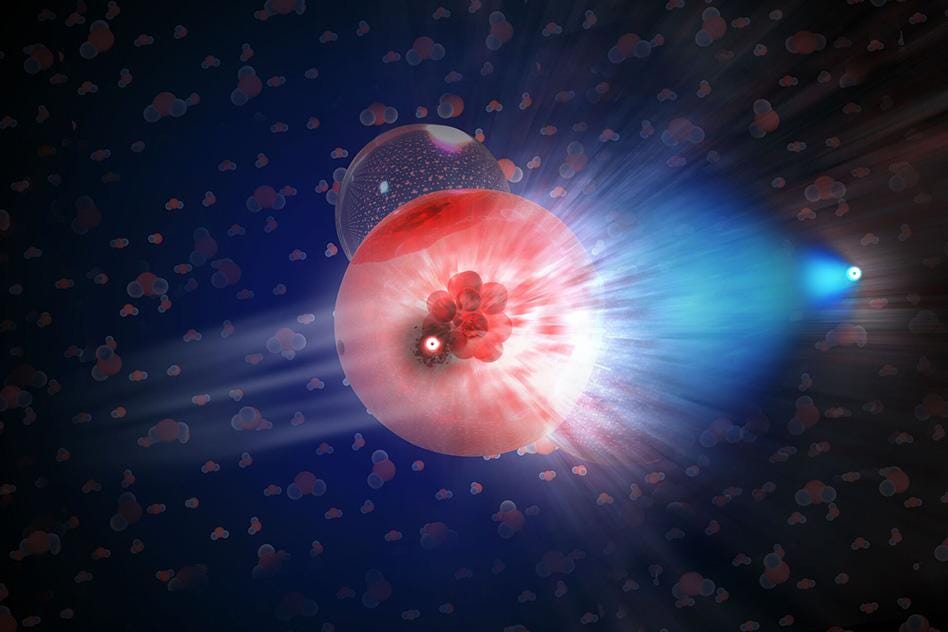
But detecting a nuclear recoil event from a dark matter interaction is no easy task. Sure, you can envision a detector where you make some sort of chamber that’s sensitive to these interactions, but the problem then becomes creating a detector that isn’t going to give you all sorts of false positive signals as well. For example, there are lots and lots of types of events that occur, within the Standard Model alone, that also create signals that would show up in any detector.
- Cosmic rays, from both the Sun and from atmospheric showers, continuously bombard Earth, and would enter any detector, where they’d collide with atomic nuclei and electrons.
- Neutrinos, from all across the Universe, would interact within the detector as well as on the surface/walls of the detector, creating particle showers within it.
- Natural radioactivity from within the Earth would pollute the detector with helium nuclei, electrons, positrons, gamma-rays, and free neutrons, all of which would interact within the detector.
- Muons, produced from cosmic rays, neutrino interactions, and other sources (like particle shower decays) also interact within the detector.
- And any impurities within your detector material itself — tiny amounts of water, trace gases, etc. — would create a contaminant signal within your detector as well.
The problem isn’t just designing an apparatus to detect the signal you’re looking for; it’s in optimizing the apparatus to decrease your background (noise) as much as possible, and for whatever background remains, to understand it well-enough that you can tease out whatever signal remains in the data.

For nearly 20 years, the XENON collaboration has been working to do exactly this. They began by choosing a location: underneath a mountain in the Italian alps, as deep underground is an outstanding place to shield yourself from most of the cosmic rays that strike Earth. They then take a “target” made of liquid xenon — an inert, chemically non-reactive noble gas — and build an experimental apparatus around it. This apparatus:
- is cryogenically cooled to a stable temperature and pressure,
- is immersed within an external electric field,
- is lined with photomultiplier tubes that can detect ionization and other energetic particle signatures,
- is surrounded by additional detectors that help you “veto” unwanted background events,
- and can be calibrated by generating “background” events during a test phase to help understand what unwanted events look like within your detector.
Although there are false-positive nuclear recoil events that arise from neutrons (which also create nuclear recoils without introducing electric charge), the experimentalists also have to reckon with radioactive decays, neutrino events, “surface” events at the walls/edges of the detectors, and — most commonly — with electronic recoils, where electrons, not nuclei, interact with “something” that creates a signal in the detector.

Some enormous steps have been taken to reduce the rate of “background events” within the detector over time, with increased sensitivity and increasingly more stringent limits set on the dark matter-normal matter interaction cross-section as a result. One advance has been to make the xenon target increasingly more pure: by eliminating other noble gases, water, and any other impurities from the target, and by having a continuously circulating “xenon distillery” running to keep it pure. The target mass remains, stably, at 176.8 K and with an atmospheric pressure of 1.89 barometers.
Most recently, the XENON collaboration has added a “neutron veto” detector, sensitive to neutron capture by protons, as well as a 700 ton water-filled Cherenkov detector to help veto out muons: two of the largest improvements in detector history. Additionally, a variety of particle-emitting sources were brought near the detector itself, including
- krypton-85,
- radon-222,
- lead-212,
- argon-37,
- and americium-241 bound to beryllium,
so that background signals like neutron emission, electron emission, positron emission, and helium nucleus emission could all be calibrated and understood.
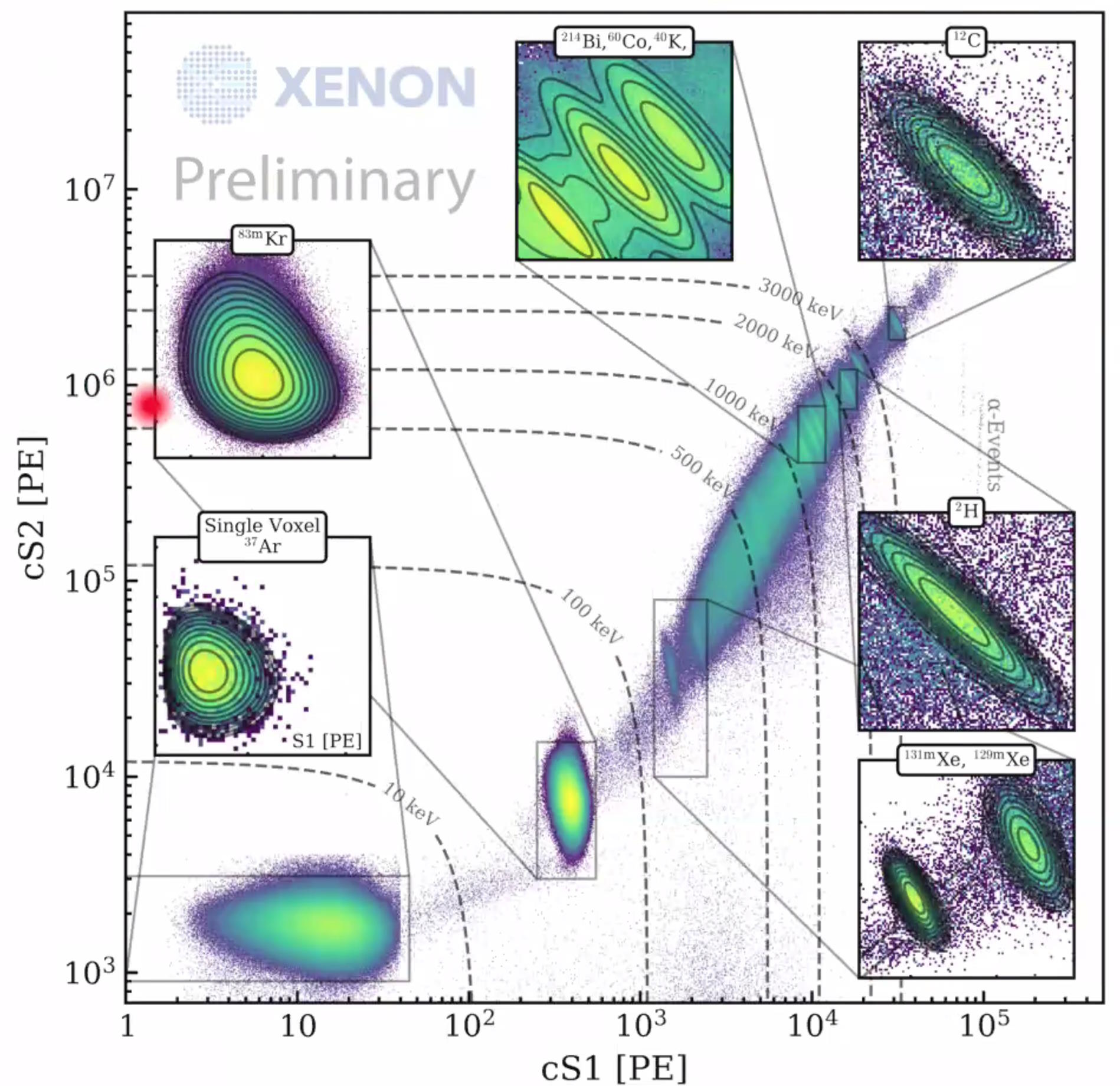
Since 2005, when the first iteration of XENON began taking data and constraining the interaction cross-section between dark matter and normal matter, a tremendous series of improvements have ensued. The first iteration of XENON was known as XENON10, because it had roughly a “10 kg target” of liquid XENON. From 2005-2007, this ~14 kg target mass showed that, over the mass range you might expect to find WIMPS (from ~1 GeV, or around the mass of a proton, to a few 10s of TeV, or somewhat above the maximum mass that the LHC could conceivably possibly probe), the cross-section could be no more than ~10-43 square centimeters. The largest contamination in the detector from background events were due to electronic recoils, at the rate of about ~2 million per ton, per year, per keV of deposited energy in the detector.
This was upgraded to XENON100 (2008-2016), with a 62 kg target, which achieved a cross-section limit of ~10-45 square centimeters and reduced the electronic recoil rate to ~1800 per ton, per year, per keV of energy.
Then, an upgrade to XENON1T (2012-2019), with a 2 ton xenon target, gave a cross-section limit of 4 × 10-47 cm², and reduced the electronic recoil rate to 82 background events per ton, per year, per keV of energy.
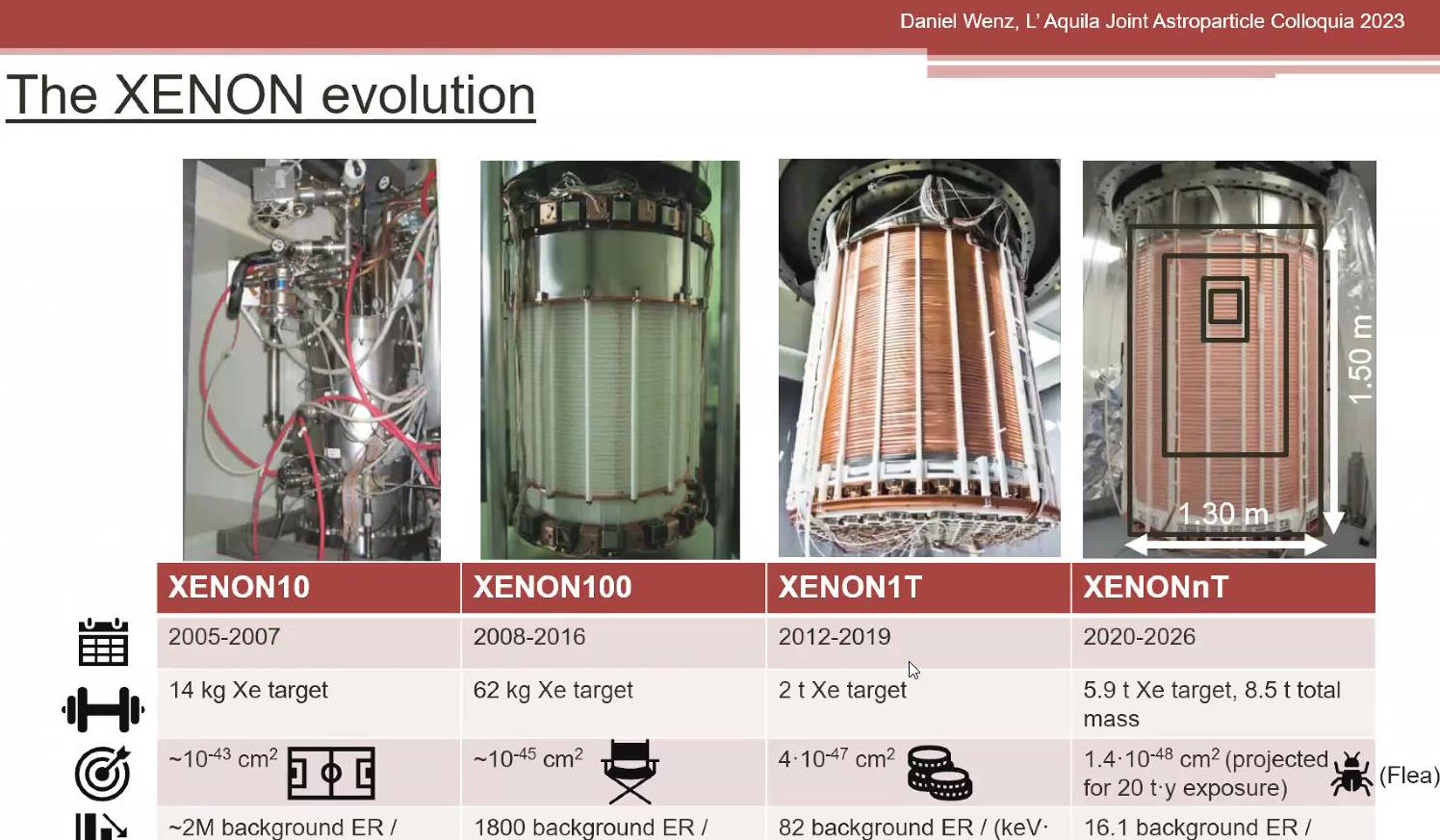
But the newest results, from XENONnT (2020-present) has an active 5.9 ton xenon target, and has reduced the electronic recoil rate all the way down to merely 15.8 background events per ton, per year, per keV. The cross-section limits have already improved, and are just half of what they were at the end of XENON1T’s science lifetime.
The key technology that makes the XENON experiment possible is what’s known as a time-projection chamber, or TPC for short. When a particle interacts with the liquid xenon, it produces a nuclear recoil that causes the nucleus of xenon atoms to excite and then rapidly de-excite, creating a photon of a specific wavelength that registers within the detectors that surround the target. However, because there’s an electric field applied to the entire detector, a wake of ionized electrons, also created from the signal, will drift upward, where they’ll register a second, independently measured signal. It’s by looking at these two ionization signals together, along with any external “vetoes” that exist, that allow the XENON scientists to determine what went on in their detector.
As it turns out, electronic recoil events due to a background signal produce “high” second signals relative to the first signal, surface (or “wall”) events produce “low” second signals relative to the first, and accidental coincidences, which are due to a variety of sources, always produce very low “first” signals. As shown in the orange contours, below, there’s also a “WIMP region-of-interest,” which is where any WIMP signal that’s created is expected to show up in the detector. Anything outside of that orange region is looked at ahead of time to help understand noise and background; everything inside of the orange region is kept “blind” until the very end.
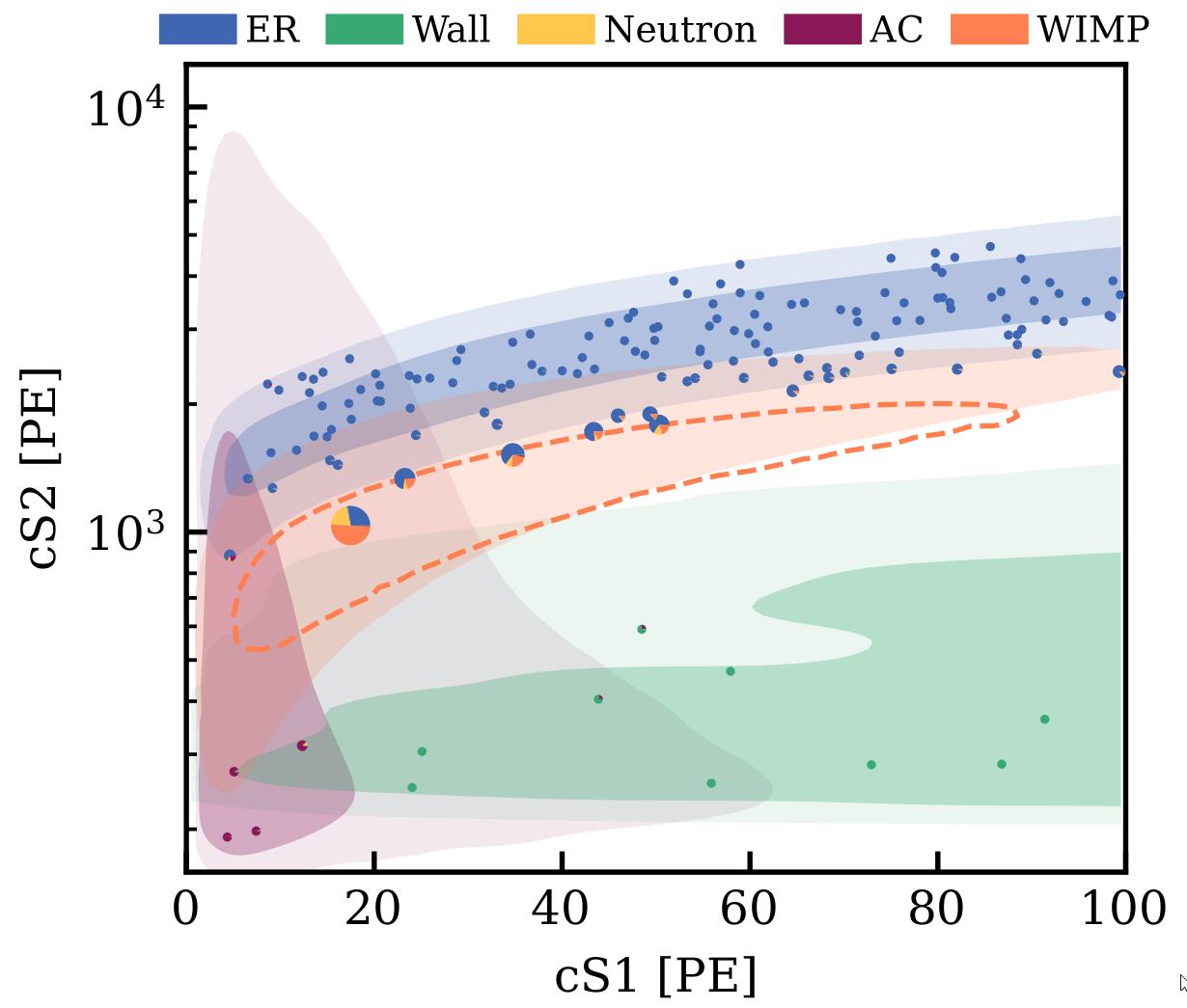
What you see, above, is the lowest-background, highest signal-to-noise result from any iteration of the XENON collaboration’s experiment in history. There were a total of only 16 events that fell into this blinded region, and that’s with 1.1 ton-years of data from XENONnT so far. This tiny number of events, most of which are likely either electronic recoils or a neutron collisions, doesn’t show any evidence for dark matter, but does show off both how far we’ve come and hints at the progress that the XENON collaboration will be able to make going forward.
With more data taken with this exact same setup, they should eventually be sensitive to detecting dark matter down to cross-sections of ~10-48 cm², which would help squeeze down the allowable parameter space for WIMPy dark matter even further. Already, the background for XENONnT is five times smaller than it was for XENON1T, which previously had the lowest background rate in history. Furthermore, improved control over radon distillation, gas-liquid xenon flow, and a novel addition of gadolinium-sulfate-octahydrate (which will help tag and veto neutrons) to the surrounding water tank/shield will help bring down the electronic recoil rate even further.
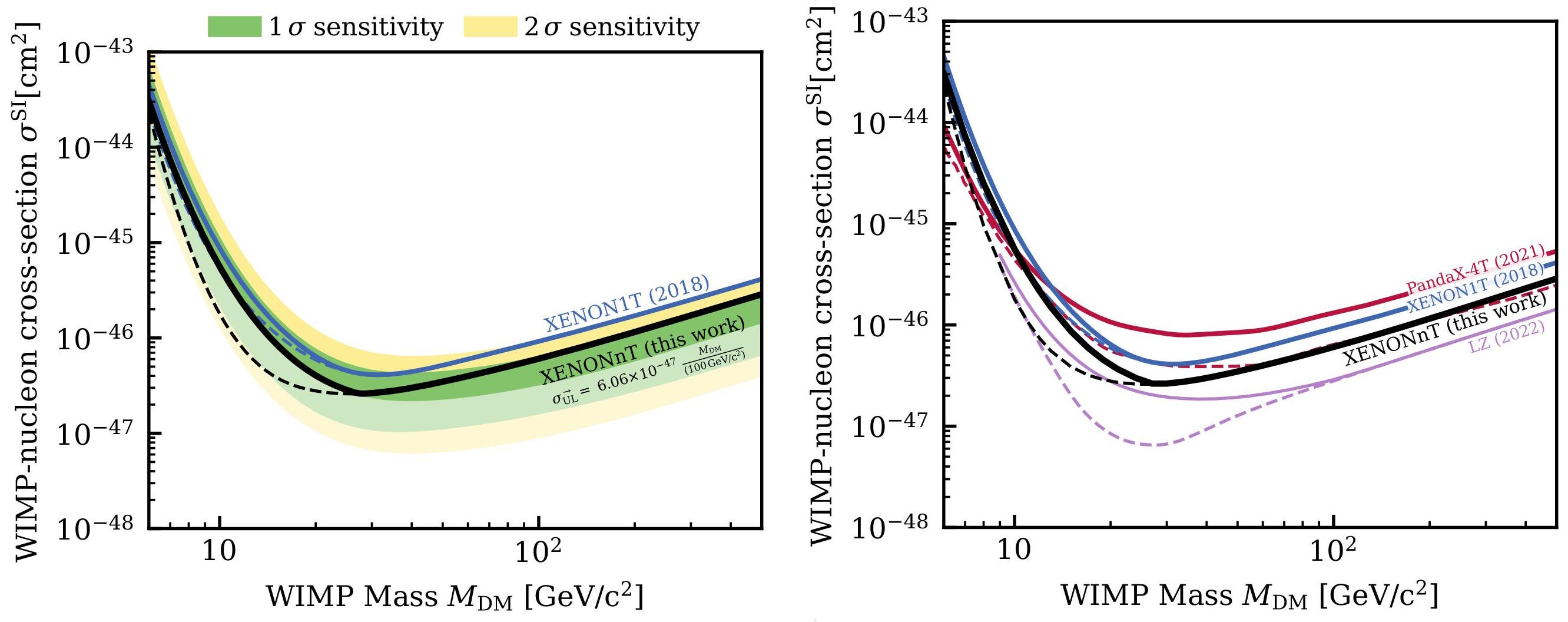
But already, as of March 22, 2023, the XENON collaboration has established extremely strong spin-independent constraints on the cross-section between dark matter and normal matter (above), as well as spin-dependent constraints for interactions between dark matter and either protons or neutrons (below). Although it is still not quite the best in the world (as the LZ collaboration superseded prior XENON constraints last year), it may become so in the future over many regions of interesting parameter space.
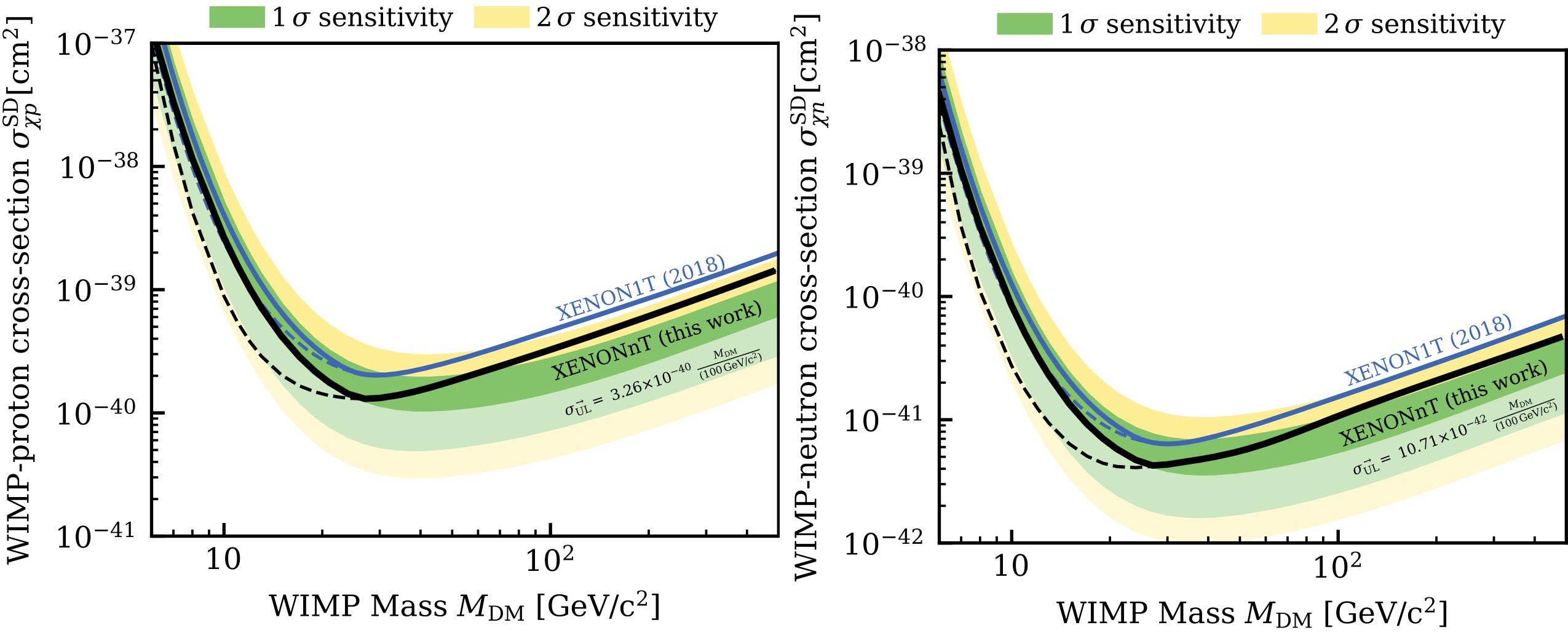
Experimentalists who work in large collaborations like XENON are often the unsung heroes of the physics world, as it’s through the collective efforts of hundreds or even thousands of people, over several decades, that lead to these important but incremental improvements. Even without theoretical motivations like supersymmetry, extra dimensions, string theory, or other novel ideas, performing these experiments is a vital part of helping us to understand not only how the Universe works and what makes it up, but for teaching us how it doesn’t work and what cannot exist within it.
It’s easy to lose faith in your experiment as it yields null result after null result, and as tentative signals from earlier attempts simply disappear as you better understand your background. But we must remember: this is what progress looks like, and whenever we push into unknown territory, it’s a high-risk, high-reward endeavor. The important thing is to do it correctly, scrupulously, and to follow the data, wherever it may lead. Dark matter might not be a WIMP, and if it is, its interaction cross-section might be well below anything our direct detection efforts are sensitive to. But we’ve already improved our limits on WIMPy dark matter by a factor of ~10,000+ in just the past 16 years. The hard work we’re putting in today is paving the way for tomorrow’s improved understanding of our nature of reality, and that’s not just worth the investment, it’s the spirit of science itself: the search for and pleasure of finding new things out!
